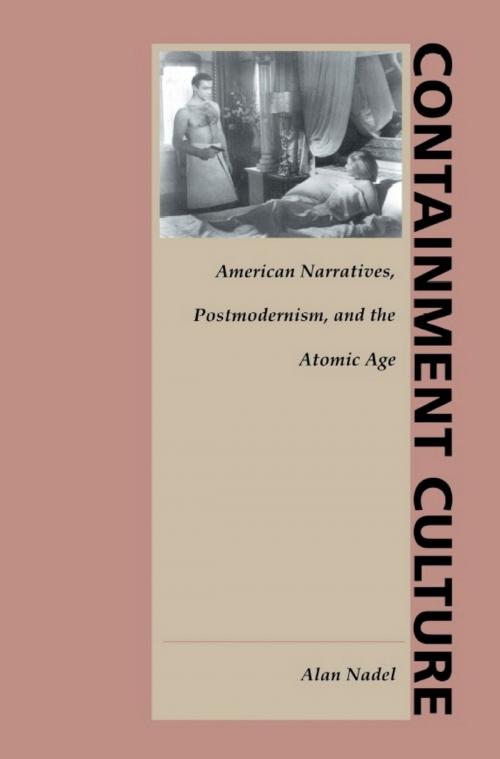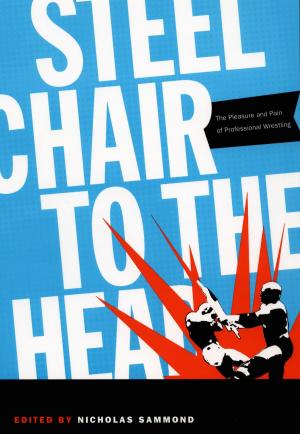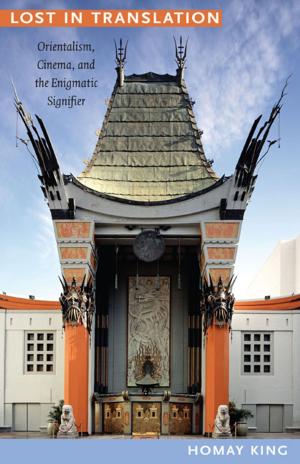Containment Culture
American Narratives, Postmodernism, and the Atomic Age
Nonfiction, History, Americas, United States, 20th Century, Fiction & Literature, Literary Theory & Criticism, Social & Cultural Studies, Political Science| Author: | Alan Nadel, Donald E. Pease | ISBN: | 9780822381976 |
| Publisher: | Duke University Press | Publication: | November 20, 1995 |
| Imprint: | Duke University Press Books | Language: | English |
| Author: | Alan Nadel, Donald E. Pease |
| ISBN: | 9780822381976 |
| Publisher: | Duke University Press |
| Publication: | November 20, 1995 |
| Imprint: | Duke University Press Books |
| Language: | English |
Alan Nadel provides a unique analysis of the rise of American postmodernism by viewing it as a breakdown in Cold War cultural narratives of containment. These narratives, which embodied an American postwar foreign policy charged with checking the spread of Communism, also operated, Nadel argues, within a wide spectrum of cultural life in the United States to contain atomic secrets, sexual license, gender roles, nuclear energy, and artistic expression. Because these narratives were deployed in films, books, and magazines at a time when American culture was for the first time able to dominate global entertainment and capitalize on global production, containment became one of the most widely disseminated and highly privileged national narratives in history.
Examining a broad sweep of American culture, from the work of George Kennan to Playboy Magazine, from the movies of Doris Day and Walt Disney to those of Cecil B. DeMille and Alfred Hitchcock, from James Bond to Holden Caulfield, Nadel discloses the remarkable pervasiveness of the containment narrative. Drawing subtly on insights provided by contemporary theorists, including Baudrillard, Foucault, Jameson, Sedgwick, Certeau, and Hayden White, he situates the rhetoric of the Cold War within a gendered narrative powered by the unspoken potency of the atom. He then traces the breakdown of this discourse of containment through such events as the Bay of Pigs invasion and the Free Speech Movement at Berkeley, and ties its collapse to the onset of American postmodernism, typified by works such as Catch–22 and The Man Who Shot Liberty Valence.
An important work of cultural criticism, Containment Culture links atomic power with postmodernism and postwar politics, and shows how a multifarious national policy can become part of a nation’s cultural agenda and a source of meaning for its citizenry.
Alan Nadel provides a unique analysis of the rise of American postmodernism by viewing it as a breakdown in Cold War cultural narratives of containment. These narratives, which embodied an American postwar foreign policy charged with checking the spread of Communism, also operated, Nadel argues, within a wide spectrum of cultural life in the United States to contain atomic secrets, sexual license, gender roles, nuclear energy, and artistic expression. Because these narratives were deployed in films, books, and magazines at a time when American culture was for the first time able to dominate global entertainment and capitalize on global production, containment became one of the most widely disseminated and highly privileged national narratives in history.
Examining a broad sweep of American culture, from the work of George Kennan to Playboy Magazine, from the movies of Doris Day and Walt Disney to those of Cecil B. DeMille and Alfred Hitchcock, from James Bond to Holden Caulfield, Nadel discloses the remarkable pervasiveness of the containment narrative. Drawing subtly on insights provided by contemporary theorists, including Baudrillard, Foucault, Jameson, Sedgwick, Certeau, and Hayden White, he situates the rhetoric of the Cold War within a gendered narrative powered by the unspoken potency of the atom. He then traces the breakdown of this discourse of containment through such events as the Bay of Pigs invasion and the Free Speech Movement at Berkeley, and ties its collapse to the onset of American postmodernism, typified by works such as Catch–22 and The Man Who Shot Liberty Valence.
An important work of cultural criticism, Containment Culture links atomic power with postmodernism and postwar politics, and shows how a multifarious national policy can become part of a nation’s cultural agenda and a source of meaning for its citizenry.















